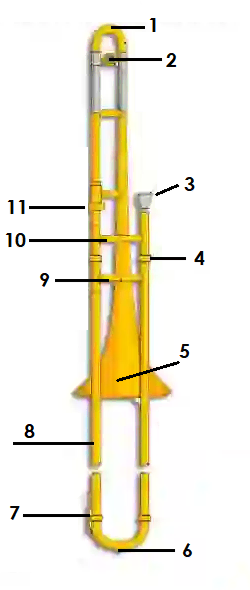Construction and function of the trombone - Philipp Dangas
Construction and function of the trombone
The trombone consists of a cylindrical tube bent into an S-shape, into which a mouthpiece is inserted at one end and opens into a bell at the other end. The parallel pipe sections of the main pipe and the two open ends of the train are connected to each other by crossbars (“bridges”). This gives the instrument the necessary stability. When the trombone is pulled out, a distinction is made between 7 different positions.
In the 1st position, the cable is fully retracted, resulting in the shortest tube length. The natural scale that can be produced in this position is the basic scale of the trumpet. This is followed by 6 further positions at an increasing distance until the train is pulled out as far as possible. All trombone designs are played with a cup mouthpiece. The material used is brass, gold brass or German silver. Qualified players use different mouthpieces with a narrow or wide bore, depending on whether they have to play high or low notes.
The original tube length of the tenor trombone (with the slide pulled in) is 2.90 m. Tenor trombone players can convert it into a tenor bass trombone by attaching a fourth or fifth valve. When playing, d is held with the left hand, the right hand operates the slide.
Table summary of the functional principle of the brass instruments
The table contains the key data on the functional principle of the brass instruments written down. There will be mouthpieces, tubes, bells and valves briefly described. In addition, the term overblowing technique is defined.

The structure of a Trombone in large representation
The components of a Trombone
- tuning slide
- counterweight
- mouthpiece
- slide lock ring
- bell
- knob/bumper
- water key/spit valve
- main slide
- second slide brace/stay
- first slide brace/stay
- bell lock nut
Internal search function
| Name | Value | Delete |
|---|